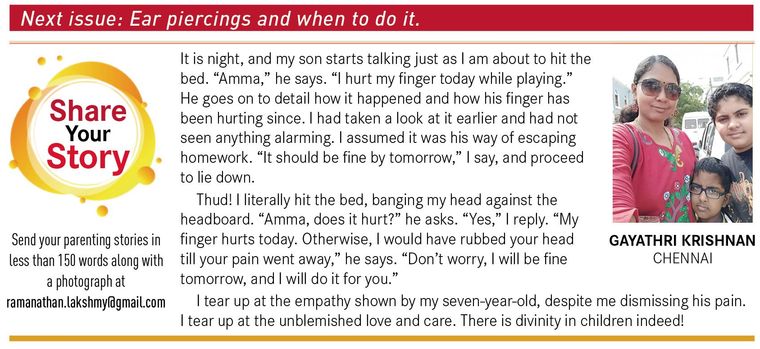A child’s first tonsure is of much cultural significance in our society. It is seen as the first offering made by the child to God. But often enough, tonsuring of infant heads proves torturous for both baby and its parents. Many go through the procedure because of the belief that a tonsure improves hair thickness or quality.
Colour, curliness and thickness of hair are genetically predetermined and cannot be altered by any number of tonsures. If your child has inherited good hair and skin genes, it will automatically show in a few years.
While hair colour is decided by the pigment cells found in the hair root (follicle), its curliness is decided by the cross section of a follicle. Follicles of a straight-haired person are round, of a wavy-haired person kidney-shaped and of a curly-haired person oval. The thickness is decided by the number of follicles present on the scalp. Typically, hair follicles begin to develop on the baby's scalp between the second and fifth month of pregnancy. No new ones are developed during the course of one's life!
If your family insists on a tonsure, a safer option to a traditional cutter (that uses a blade) is an electric clipper. When using the former, there is a high risk of your child's scalp receiving a nick if he/she tries to wriggle out of the procedure. A clipper works more like a trimmer, leaving behind the tiniest bit of hair growth on the scalp. The end result is a tonsure that is a few days old. Most parlours today stock it and recommend using it for children.
If you have to tonsure your child's head outside a temple or other busy place, make sure you are prepared.
< Carry along an antiseptic cream for any cuts that may grace the scalp of your toddler's head.
< Make sure the blade used is new and the cutter is sterile.
< Carry toys to distract your child for a smooth tonsure session.
< Do not allow the child's head to be slathered with sandal paste unless there is a cut or bruise. The process clogs the pores on the scalp and prevents them from breathing.


